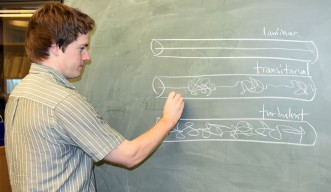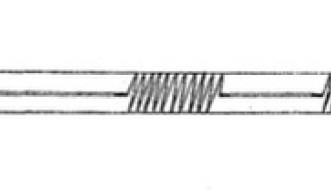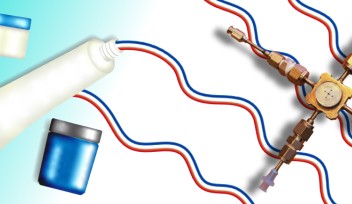In the Pipeline: A Solution to a 130-Year Old Problem
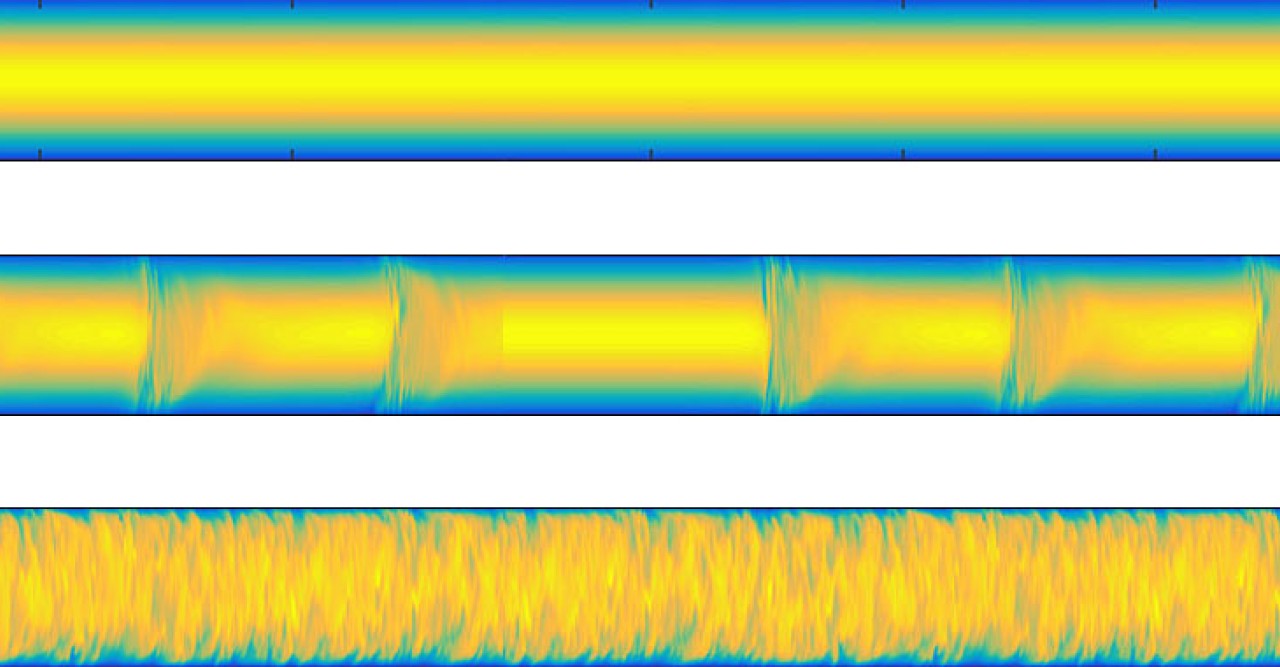
Anyone who has ever turned on a tap knows something about fluid dynamics. Whether a fluid is flowing through household plumbing or industrial oil and gas pipelines, when it runs slowly its flow is smooth, but when it runs quickly its flow is more chaotic.
More than 130 years ago, British physicist and engineer Osborne Reynolds described fluid flowing at low speeds as ‘laminar,’ meaning it flows smoothly in a single direction, and fluid flowing at high speeds as ‘turbulent,’ meaning it experiences chaotic changes in pressure and energy. Reynolds developed a set of equations to describe the relationship between the speed at which a fluid flows and the friction that is created between it and the pipe.
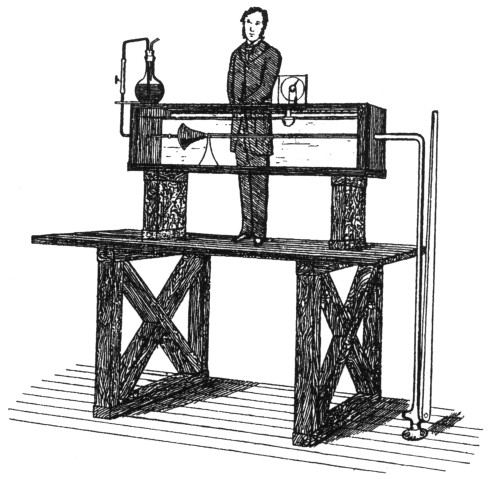
Engineers still use Reynolds’s “laws of resistance” today to calculate how much energy is lost to friction as liquids and gases flow through a pipe. However, one mystery has remained unsolved: what happens when a flow transitions from laminar to turbulent?
“In transitional flow, friction varies with no discernible patterns,” says Dr. Rory Cerbus, a postdoctoral researcher at the Okinawa Institute of Science and Technology Graduate University (OIST). Until now, the laws of resistance for transitional flow were unknown, making it difficult to calculate friction and energy loss during this type of flow.
Cerbus and other researchers in the Fluid Mechanics Unit and the Continuum Physics Unit at OIST have found a surprisingly simple solution to this 130-year old conundrum. “We have shown that, although the transitional state appears to be a menagerie of flow states, these can all be characterized by laws we already know,” says Professor Pinaki Chakraborty, leader of the Fluid Mechanics Unit. “This simplifies a fundamental problem.”

Transitional flow is known to consist of intermittent patches of different types of flow, which alternate along the pipeline. In the standard approach to measuring friction in transitional flow, they are simply lumped together.

The OIST researchers instead analyzed the patches of smooth and chaotic flow separately. They ran water through a 20-meter glass pipe. By adding small particles to the water and illuminating it with a laser, they could measure the speed of the flow. This allowed them to cleanly identify the alternating patches of smooth and chaotic flow in the transitional flow. They then measured the friction inside the individual patches using pressure sensors.

“We repeated a textbook experiment that is routinely done by thousands of engineering undergraduates every year all around the world,” says Cerbus, lead author of the paper, which was recently published in Physical Review Letters. “We used essentially the same tools, but with the crucial distinction of analyzing the patches separately,” he says.
The researchers showed that despite the outward complexities, the law of resistance for the smooth patches is consistent with laminar flow, while the law of resistance for the chaotic patches is consistent with turbulent flow. Therefore, transitional flow can be studied using Reynolds’s original laws of resistance.
Understanding how much energy is required to pump fluid through a pipeline when it is flowing in the transitional state could help industries, such as oil refineries, minimize energy waste and improve efficiency.
“If you look carefully, you find that often there is simplicity beneath complexity,” says Chakraborty.
Specialties
Research Unit
For press enquiries:
Press Inquiry Form











